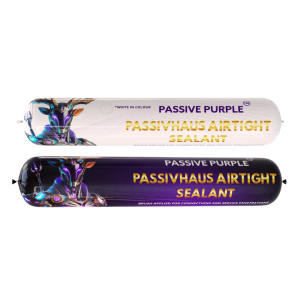8115
Damp Proofing Vs Waterproofing: What is the Difference?
Written by
Damp proofing and waterproofing are methods in modern building construction used to prevent structural damage caused by moisture.
Anyone who deals with construction or is simply renovating an older property has asked themselves at some point if they should be using a damp proofing or a waterproofing course.
Damp proofing vs waterproofing can be a confusing topic for many. People often use both terms interchangeably under the assumption that damp proofing and waterproofing are the same, when in fact they are not.
But what are the main differences and can a damp proof membrane have the same function as a waterproof one and vice versa? In this article we’ll talk you through the key differences between the two and when they are required.
What is the Difference Between Damp Proofing and Waterproofing?

While both methods deal with moisture in your walls, floors and ceilings, there are several differences between damp proofing compared to waterproofing. The main one is to do with what type of moisture they can stop.
Damp proofing prevents rising moisture from the soil. Waterproofing, on the other hand, stops any moisture and liquids from penetrating your structure.
Additionally, waterproofing can withstand hydrostatic pressure, whereas damp proofing is not effective for water under pressure. The foundation of your building is below ground level, which means it’s always in contact with the soil surrounding it.
The pressure of the ground water pushing against the foundation can cause moisture problems and lead to cracks in the foundation. A waterproofing course will seal such cracks and stop moisture from seeping through. Damp proofing, however, doesn’t have such capabilities.
When is Damp Proofing Required?
Since damp proofing can’t resist hydrostatic pressure, this method of stopping moisture is more effective for surfaces not subjected to pressure differences. But while it can’t resist water under pressure, it can stop ground moisture from penetrating your walls.
If you have to prevent penetrating moisture in a single-story building that is all above-grade, you can treat the area transitioning from the floor edge to the footing with a damp proofing course. Since there isn’t a basement or other below-grade space, this will provide sufficient protection from ground moisture.
In cases where the floor level inside your building is higher than the external ground level, the risk of pressurised water entering the foundation is much lower, so damp proofing would be an appropriate course of action.

When is Waterproofing Required?
Waterproofing membranes are normally required in situations where damp proofing doesn’t provide sufficient protection. They are usually applied to the foundations of your building and on surfaces under hydrostatic pressure.
Subsurface walls need to be waterproofed using a suitable liquid or sheet-applied membrane. You should apply a waterproofing membrane on walls that are in contact with the ground. This way the water pressure will push the membrane against the surface stopping moisture from penetrating.
When installing a waterproofing course it’s essential to ensure there are no gaps. Cover both vertical and horizontal surfaces with one continuous layer. This includes anywhere in your structure where dampness penetration can occur.
Find the Perfect Damp Proofing or Waterproofing Solution for your Building!
Here at Intelligent Membranes, we offer complete solutions to both – damp proofing and waterproofing. Our sustainable, VOC-free liquid DPMs provide a durable coating to stop moisture and dampness from ruining your building.
If you’re looking for a product to help with damp proofing in your building, then perhaps our God of Waterproofing – Poseidon can help.
For all your waterproofing needs,The GOAT is our all-in-one answer to any moisture problems.
We like giving back, so for every order placed we will plant a tree. Shop our products today for fast UK delivery!
Written by
Passive Purple Editions
-

Passivhaus Airtight Sealant – 600ml
Enquire Now Below From £12.00 + VAT Select options This product has multiple variants. The options may be chosen on the product page

